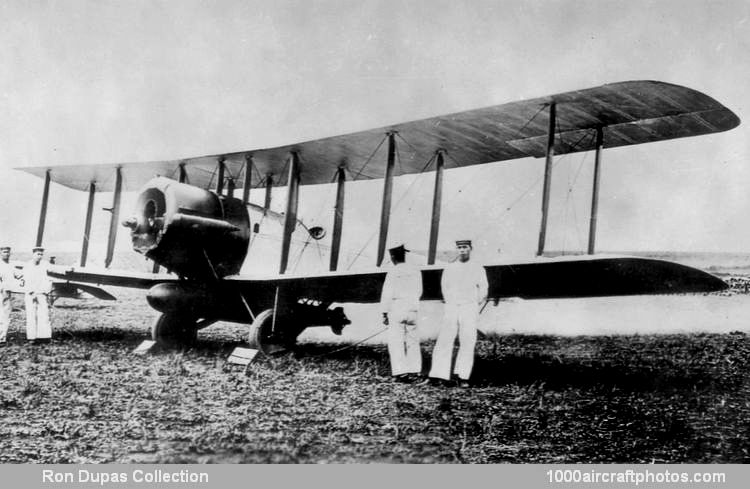11/15/2020. Remarks by Johan Visschedijk: "The Cuckoo was something of a landmark in British naval aircraft design; it was the first landplane torpedo-carrier capable of operation from a flying-deck. Before the advent of the Cuckoo the torpedo could be carried only by seaplanes which were severely restricted in their capabilities. They suffered not only the weight handicap of their floats, but also the inability to operate from any but the calmest of seas. The idea of using a landplane first came from that staunch advocate of the torpedo, Commodore Murray Sueter, who made the suggestion to Sopwith in October 1916.
The prototype Sopwith T. 1 (N 74), later christened Cuckoo, first made its appearance in June 1917, powered by a 200 hp Hispano-Suiza 8B eight-cylinder liquid-cooled V-engine. After trials at the Isle of Grain, a production order for 100 aircraft (serialed N7000 to N7099) was awarded to the Fairfield Engineering Company at Glasgow in September 1917. In February 1918 a further 100 Cuckoos were ordered; fifty from Pegler of Doncaster (N6900 to N6949) and fifty from Blackburn (N6950 to N6999). The Blackburn-built Cuckoos were the first to be delivered; N6950 emerged in July 1918 and was followed by the first Fairfield Cuckoo in September and the first Pegler Cuckoo in October.
At the Armistice just over 90 Cuckoos had been delivered and contracts for 350 placed. Many of these were cancelled, but limited production continued during 1919 of a Mk.II version which had a 200 hp Wolseley WA.4 Viper engine, a British built, high-compression derivative of the Hispano-Suiza 8, built under license by Wolseley Motors, in place of the Sunbeam Arab of the Mk.I.
The Cuckoo first entered service with the Torpedo Aeroplane School at East Fortune, where pilots were trained for the operational squadron which joined the Fleet on October 7, 1918, and embarked in HMS Argus on October 19. The Armistice intervened before the squadron could prove itself in action.
Cuckoos served for a number of years in aircraft-carriers and with shore-based torpedo squadrons. They were finally withdrawn when No. 210 Squadron disbanded at Gosport in April 1923.
Pictured above is one of six Cuckoo Mk.IIs that were delivered to the Japanese navy by the British Air Mission in 1921. The British Air Mission was the result of a Japanese government request to Britain in late 1920, to send a naval aviation mission to teach flying, navigation, aerial fighting, 'torpedo firing', 'deck flying' and to establish bases and schools."
